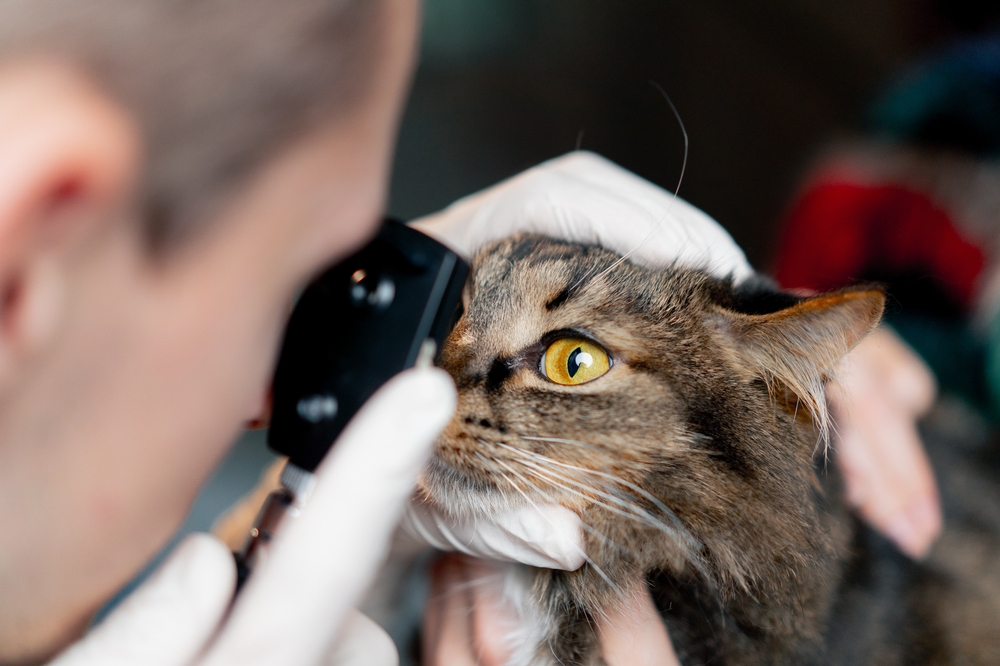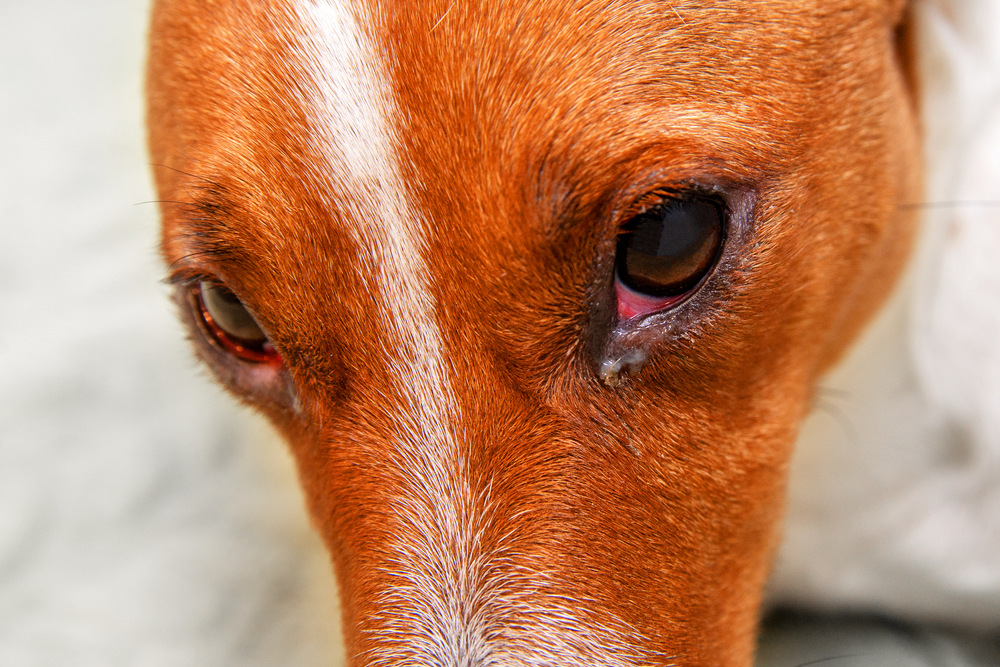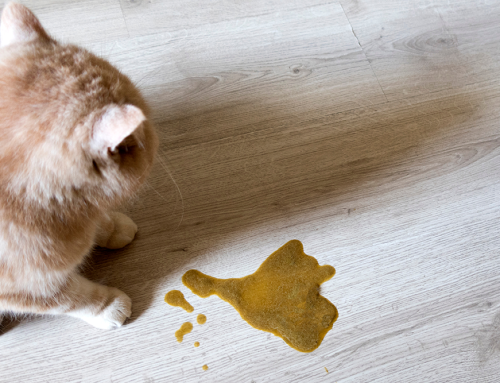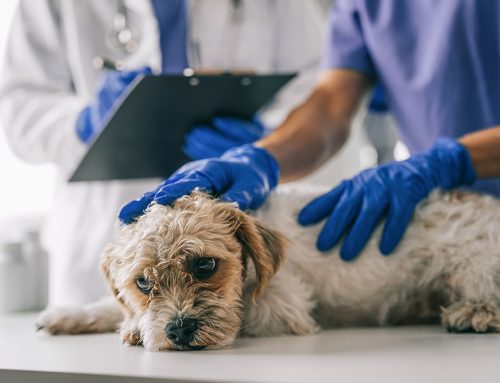Your pet’s eyes are complex organs with many specialized structures that work together to enable vision. Although pets can live happily without sight, eye conditions can cause your pet to suffer pain or discomfort. Understanding common pet eye conditions and their associated signs and symptoms can help ensure prompt treatment to resolve the discomfort. The Wellness Animal Hospital team provides a lesson in basic eye anatomy, common eye conditions, and how our team can assist with diagnosis and treatment.
Pet eye anatomy
Each species has unique eye features, but the basics are similar. Pet eye conditions can develop in any part of the eye’s anatomy or affect multiple structures. Problems in the vision pathway can lead to obstructed or impaired vision. Key eye anatomy features in dogs and cats include:
- Cornea — The transparent outer layer that covers the front of the eye and creates a window for light to enter
- Sclera — The white parts of the eyes
- Conjunctiva — The thin, vascular tissue layer covering the sclera and lining the eyelids
- Iris — The colored part of the eye that controls pupil size
- Pupil — The black part in the eye’s center that allows light to enter
- Lens — The biconvex structure behind the iris that focuses light onto the retina
- Retina — The inner layer at the back of the eye that detects light and transmits vision signals to the brain
- Optic nerve — The nerve that transmits visual information from the retina to the brain
Pet eye condition signs
Pets can’t tell you when something is wrong, so pet owners must be able to identify possible pet eye condition signs, so they can seek veterinary care to diagnose and treat the problem. Common signs that indicate eye issues include:
- Redness or inflammation
- Excessive tearing or discharge
- Squinting or blinking
- Cloudiness or other color changes
- Pawing at or rubbing the eyes on objects
- Light sensitivity
- Known eye trauma
Common pet eye conditions
Pets can develop a multitude of eye problems, but some occur more commonly. Key eye health problems affecting dogs and cats include:
- Conjunctivitis — Conjunctivitis (i.e., “pinkeye”) is an inflammation of the conjunctiva resulting from allergies, infections, or irritants. Signs include redness, swelling, and discharge.
- Cataracts — Cataracts cause the eye’s lens to become white and opaque, impairing vision. Causes include genetics, age, previous eye injury, or nutritional deficiencies.
- Glaucoma — Glaucoma causes increased pressure in the eye that can damage the optic nerve and lead to blindness. Signs include cloudiness, redness, tearing, and vision loss.
- Corneal ulcers — Ulcers are abrasions on the cornea, often caused by injury, aberrant eyelashes, eyelid disorders, corneal inflammation (i.e., keratitis), or dry eye. Signs include redness, tearing, and squinting.
- Dry Eye — Keratoconjunctivitis sicca (KCS) reduces tear production, which leads to dryness, inflammation, and long-term damage. Signs include redness, thick discharge, squinting, and rubbing at the eyes.
- Lid and lash disorders — Pets can develop problems with their eyelid shape or have too many eyelashes, which rub on the cornea. Signs include recurring ulcers, squinting, and tearing.
- Eye inflammation — Inflammation can develop on the eye’s surface or interior components from systemic or local infections, inflammatory diseases, trauma, surgery, or cancer. Signs include redness, pain, and sometimes squinting.
- Retinal diseases — The retina can degenerate over time or detach, causing complete vision loss. Signs include a gradual or sudden decline in vision.
Diagnosing pet eye conditions

Seek veterinary care if you notice eye condition signs or eye changes in your pet. Our veterinary team can perform initial diagnostic testing and an eye examination, including a complete physical examination, fluorescein dye test for ulcers, tonometry to check eye pressure, and a Schirmer tear test to check tear production. If these tests do not provide a definitive diagnosis, our team may order additional testing, including blood work or X-rays.
When eye problems are severe, require urgent intervention, or necessitate delicate ocular surgery, our team may refer you to a veterinary ophthalmologist for specialist care. The ophthalmology team may order additional diagnostics and perform a more detailed and complex eye examination with specialized equipment.
Managing pet eye health
Treatment for eye diseases depends on the diagnosis. Generally, treatment falls into the medical (e.g., medication therapy, monitoring), or surgical categories. Some eye conditions, such as conjunctivitis or eyelid disorders, are curable, while others, such as KCS or glaucoma, require life-long management with frequent follow-ups.
Keep an eye on your pet’s eye health by knowing basic anatomy and common pet eye conditions and taking your pet for regular veterinary check-ups to prevent minor eye concerns from progressing. Contact the Wellness Animal Hospital team if your furry pal shows eye condition signs or to learn more about our eye health diagnostic and treatment services.







Leave A Comment